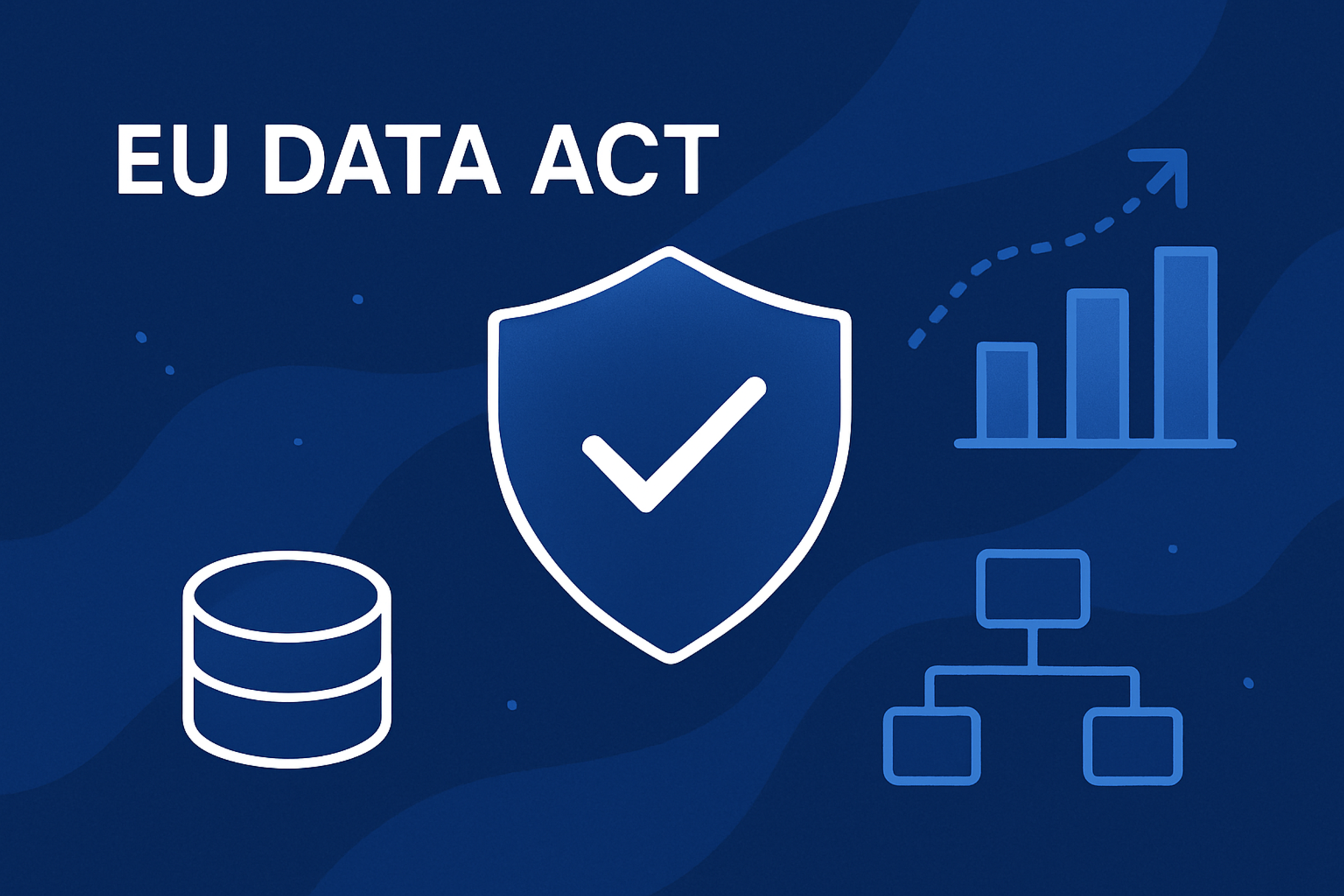Monday, June 2, 2025
The EU Data Act: What It Means for Your Business — and How Intrusti Can Help

1. What is the EU Data Act?
The EU Data Act (Regulation (EU) 2023/2854) is the centre-piece of Europe’s data-economy strategy. It entered into force on 11 January 2024 and most provisions start to apply on 12 September 2025. digital-strategy.ec.europa.eu
Unlike the GDPR, which governs personal data, the Data Act covers all industrial and IoT data. Its objectives are to
- give users of connected products a right to the data those products generate,
- ensure fair, reasonable and non-discriminatory terms when one business needs data from another,
- slash the costs of switching cloud providers or running multi-cloud setups, and
- create clear procedures for mandatory data disclosures requested by public bodies in exceptional circumstances.
2. Key Obligations and Deadlines
- Connected products & related services
- From 12 September 2026, manufacturers must make product-generated data directly accessible to the user — or to a third party the user designates — in real time and in a usable format. cooley.com
- B2B contracts
- Any term that unilaterally restricts access, use or sharing of data can be struck down as “unfair” for contracts concluded after 12 September 2025. Long-running contracts face the same scrutiny from 2027 onward. lexology.com
- Cloud switching & multi-cloud
- By 12 September 2025 providers must publish detailed roadmaps for switching.
- By 12 January 2027 they must abolish all extraction or egress fees except very limited cost-based charges. digital-strategy.ec.europa.eukennedyslaw.com
- Data requests by public authorities
- From September 2025, businesses in data-rich sectors must comply with strict turnaround times and compensation rules when authorities request data in emergencies or for specific public-interest purposes. deloitte.com
Ignoring these timelines risks contractual disputes, delayed product launches, loss of customers who demand their data — and ultimately fines from national authorities empowered to enforce the Act.
3. Challenges Companies Are Already Reporting
- Data-mapping at scale
Teams must catalogue every dataset tied to a connected product, label ownership and usage rights, and surface that information in legal terms. - Trade secrets vs. disclosure
OEMs fear that raw telemetry might reveal performance curves, usage patterns or AI models. The law allows only narrow refusals. deloitte.com - Contract remediation
Boiler-plate licences, royalties and liability clauses rarely survive the Act’s unfair-terms test; legal teams face a rewrite marathon. twobirds.com - Interoperable formats & APIs
“Same quality and usability” means re-engineering schemas, building stable APIs and documenting them for third parties. cliffordchance.com - Cloud-exit logistics
Multi-terabyte workloads now need automated run-books for extraction, checksum validation and redeployment — something most IT teams have never scripted end-to-end.
4. How Intrusti Turns Compliance Into Opportunity
Intrusti was designed from day one around the Data Act’s articles, annexes and deadlines. Here is how our Alpha tackles the pain points:
- Data Atlas™ — automatically discovers telemetry streams, databases and object stores, tags them with Data-Act-relevant metadata (origin, holder, user rights) and draws lineage graphs your lawyers can understand.
- Contract Builder — uses clause libraries aligned with the Act’s Annex on unfair terms; compares legacy agreements, flags offending language and suggests redlines in plain English (or German).
- Secure Access Gateway — issues time-boxed, scope-controlled API tokens so users or nominated third parties can pull live data without exposing the whole backend; every request is immutably logged.
- Trade-Secret Guardrails — a rules engine that enforces field-level redaction, masking or aggregation before data leaves your environment, balancing legal duties with IP protection.
- Portability Orchestrator — generates a step-by-step switching plan, exports datasets in open formats, validates integrity and hands off Terraform-ready bundles for re-deployment on the destination cloud.
Early adopters are already using these modules to transform compliance projects into new revenue streams (monetised data-sharing APIs), faster vendor onboarding, and reduced lock-in risk.
5. Your Next Steps
- Plot your dates. If your roadmap includes connected-device launches after September 2026, the real-time data-access requirement is already on the critical path.
- Audit your contracts. Identify clauses that may be void in a few months.
- Test drive Intrusti. Join our Alpha, see the modules in action, and steer the roadmap with your feedback.
The EU Data Act isn’t just another compliance box to tick; it is the blueprint for the European data economy. With Intrusti, you can turn that blueprint into a competitive edge — starting today.
